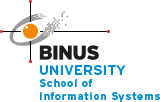Why Requirement Gathering is Crucial in Information System Projects

In any Information System (IS) project, regardless of the development methodology or System Development Life Cycle (SDLC) model used, there is one essential phase that cannot be overlooked: requirement gathering. Whether an organization follows a structured Waterfall model, a flexible Agile framework, or a hybrid approach, every project begins with a fundamental understanding of what the system is expected to accomplish. No matter how advanced the technology or efficient the process, without a clear grasp of user needs and business goals, an Information System project risks moving in the wrong direction, potentially wasting time, resources, and opportunities.
Requirement gathering serves as the foundation of any IS project. It is the stage where project teams collaborate with business users, IT personnel, managers, and other stakeholders to capture their expectations, operational needs, and specific problems the system should address. The information collected during this phase shapes the overall direction of the project, influencing decisions about system features, workflows, and data structures. If requirements are incomplete, inconsistent, or misunderstood, it can lead to serious issues later in the project, such as delays, increased costs, or the delivery of a system that fails to meet organizational objectives.
A major reason why requirement gathering is so critical is its role in reducing project risks. A comprehensive and well-documented set of requirements acts as a blueprint for developers, ensuring that the system being built aligns with the business goals it was intended to support. It also helps minimize the occurrence of scope creep, where additional features or modifications are introduced without proper assessment, disrupting the project’s timeline and budget. By defining clear, agreed-upon requirements from the beginning, both the project team and stakeholders can maintain a shared understanding of priorities, manage expectations effectively, and measure progress with confidence.
Another important benefit of requirement gathering lies in its ability to support accurate project planning and resource management. When project managers and system analysts have a thorough understanding of what the system must accomplish, they can make more reliable estimates regarding costs, schedules, and personnel needs. This allows organizations to allocate resources appropriately, preventing overuse of key staff members or delays caused by unexpected tasks. Clear requirements also contribute to more efficient system design and development, as developers can avoid unnecessary revisions and focus on delivering features that truly matter to the business.
In addition to operational and financial advantages, requirement gathering plays a crucial role in ensuring user satisfaction and promoting system adoption. The people who will use the system daily have valuable insights into current processes, challenges, and opportunities for improvement. By involving users early in the project through interviews, surveys, workshops, or prototyping sessions, organizations can gather practical input that shapes a system suited to actual working conditions. A system built with end-user input is more likely to be intuitive, convenient, and capable of addressing real problems, increasing user acceptance once it is implemented.
Thorough requirement gathering also enhances decision-making throughout the project. When changes or challenges emerge, having a complete, structured requirement document provides a clear point of reference, helping project teams evaluate the implications of adjustments or trade-offs. It keeps the project anchored to its original goals and reduces the risk of deviating toward unnecessary features or unplanned expansions that do not contribute to the system’s core purpose.
Lastly, the requirement gathering process helps strengthen collaboration and trust among stakeholders. By actively involving business users, management, and technical experts in discussions from the outset, project teams demonstrate openness and a genuine interest in meeting organizational needs. This collaborative atmosphere not only improves the accuracy and completeness of requirements but also encourages a sense of shared responsibility for the project’s success. As a result, stakeholders are more likely to support the system’s implementation and contribute to overcoming challenges as they arise.
In conclusion, requirement gathering is an indispensable step in every Information System project, regardless of the SDLC model or technological tools involved. It forms the foundation for planning, development, and implementation, guiding teams toward delivering a system that aligns with business objectives, meets user expectations, and operates efficiently within its intended environment. Ignoring or rushing through this phase can lead to misaligned systems, wasted resources, and poor user acceptance. By prioritizing thorough, collaborative, and well-structured requirement gathering, organizations improve their chances of executing successful IS projects that deliver real, lasting value.

